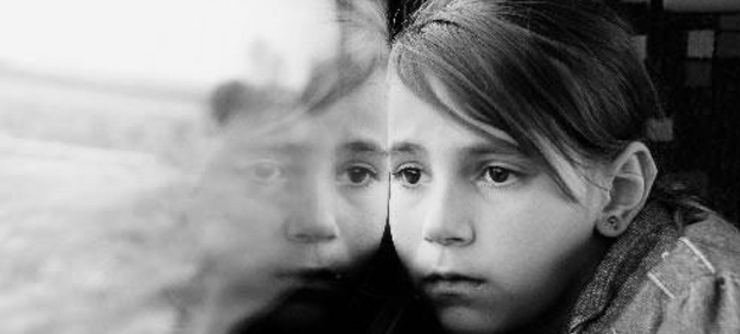Research shows that almost 75% to 80% of children diagnosed with an anxiety disorder suffer from another psychiatric disorder, most commonly depression. The Surgeon General’s report on mental health states, “Anxiety and depression frequently co-exist, so much so that patients with combinations of anxiety and depression are the rule rather than the exception.” Since depression and anxiety are often together, how do you tell the difference?
Discerning the Difference
Yet discerning the difference between anxiety and depression, or what the combination of both together looks like, can be very difficult because the two have a great deal of overlap. While the two disorders are separate conditions, they do share common symptoms, which include: despondency, withdrawal, sleep-problems, nightmares, tension, poor concentration, fatigue, guilt and loss of appetite.
Symptoms of Depression
Children with anxiety can be prone to demoralization, discouragement, and hopelessness. For some children, this can reach the severity of a depressive episode. The anxious child may experience sudden panic or anxiety attacks without any recognized trigger, and often lives with constant nagging worry or anxiousness. Depression, however, is characterized by more sadness than anxiety. Children with depression are also prone to rumination, but the focus of their fixations is typically their negative self-worth or value, which is consistent with their mood. Energy levels are usually very low, and they can often feel overwhelmed by day-to-day tasks.
Other signs and symptoms of depression (experienced most of the time, nearly every day) include: noticeable sadness or irritability, a lack of interest or pleasure in almost all activities, feelings of worthlessness, guilt and poor self-esteem, trouble concentrating or making simple decisions, sleeping poorly at night, or too much in the day, a noticeable decrease or increase in appetite or weight, restlessness or lethargy, and thoughts of own death (not just a fear of dying).
More Intense Symptoms when Together
Anxiety can be much harder to treat when it is complicated by depression. In fact, clinicians have observed that when anxiety occurs in combination with depression, the symptoms of both the depression and anxiety are more severe compared to when those disorders occur separately. One person can have both anxiety and depression, and some may even develop depression symptoms as a result of their anxiety disorder. Depression can occur after someone experiences anxiety, because someone that deals with severe anxiety may end up feeling drained and hopeless once her anxiety or anxiety attack is over. This is why the two conditions can be tough to tell apart.
Side by Side Comparison
Physical symptoms can be very similar between anxiety and depression, as well. Both anxiety and depression can leave a person feeling drained and fatigued. However, in the case of anxiety, it tends to occur after intense anxiety, while depression tends to be more constant, without any obvious triggers. Other physical symptoms include:
Depression:
- Severe lack of energy or drive.
- Severe appetite changes, headaches, and sleep problems.
- Flat affect (complete lack of emotion), along with slowed thinking and behaviors.
Anxiety:
- Physical symptoms that resemble health disorders, especially if coupled with health worries.
- Fight or flight response symptoms, such as shaking, sweating, feeling the need to run or move.
- Fast heart rate, bowel issues, hyperventilation, and other “energy” causing symptoms.
Depression tends to have fewer physical symptoms; however, the emotional symptoms can be so noticeable (particularly suicidal thoughts), and the lack of energy so great, that many people with depression deal with intense struggles daily that rival the symptoms of anxiety.
Another Difference
Another reason people have trouble distinguishing between anxiety and depression is because both cause changes in neurotransmitter function – especially serotonin. Low serotonin levels play a role in both anxiety and depression. The two disorders can share symptoms and can also contribute to the development of each other. Also because of the neurotransmitters involved, emotions can “feel” completely natural. For example, someone with depression rarely thinks to herself that she has depression because her mind honestly believes the emotions she is experiencing to be “true.” Conversely, someone with anxiety may be more prone to realize she is struggling with anxiety.
Both Can Be Treated
Both anxiety and depression also share the ability to recover. Both are treatable. A group of anti-depressant medications known as the Selective Serotonin Reuptake Inhibitors (SSRIs) have shown to be helpful with both anxiety and depression. Also, research has shown that there are abundant ways to make sure you’re able to help your child control and even cure her anxiety and/or depression. If you’re having trouble making sense of your child’s feelings and emotions, it might help to schedule a consultation with a professional therapist who can help you better navigate through the uncertainty and confusion about what your child is experiencing.
Resources:
“Depression versus anxiety.” Psych Central. Retrieved on February 16, 2015, from http://psychcentral.com/lib/depression-versus-anxiety/0001295
Wagner, A. (2002). Worried No More: Help and hope for anxious children. Rochester: Lighthouse Press.
“What is the difference between anxiety and depression?” Calm Clinic. Retrieved on February 16, 2015, from http://www.calmclinic.com/anxiety/difference-anxiety-depression

 Emily Powell Bass
Emily Powell Bass
[…] indicates that the rates of anxiety and depression among teens in America have been rising over the past fifty to seventy years. In fact, some assessments […]